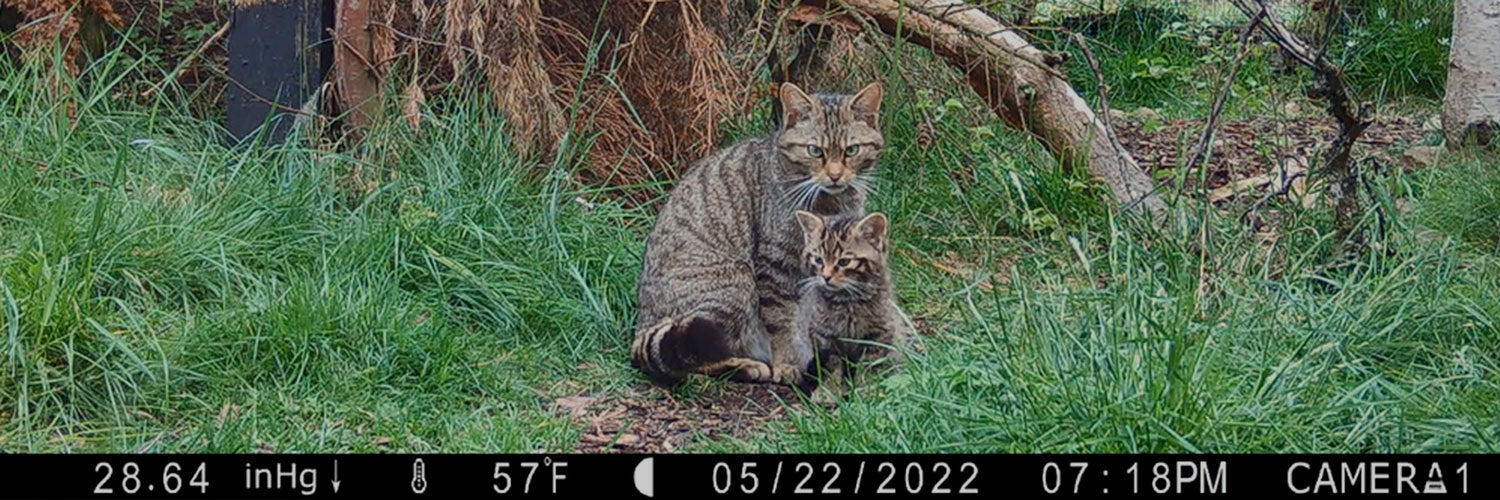The Saving Wildcats partnership project, led by the Royal Zoological Society of Scotland, hopes to release the first set of around 20 wildcats into the Cairngorms National Park from 2023, aiming to restore Scotland’s population of Highland tigers. This will be the first time that wildcats have ever been released into the wild in the UK, and the project team have been working hard to make sure that this proposed release will be as successful as possible.
So far, the 2022 breeding season, which was the first of the project, has been extremely successful, with several litters born in a dedicated conservation breeding for release centre in an off-show area at Highland Wildlife Park.
In addition to the ex-situ breeding programme, which is the part we can do within the park, the in-situ field team have been carrying out lots of preparatory work in the potential release sites to reduce threats and make sure the areas are suitable for the released wildcats.

This involves a lot of ecological surveys, including large-scale camera-trap observation of the release sites and the surrounding areas. Camera traps are digital cameras fitted with an infra-red motion sensor which is triggered by heat and movement. When the camera detects an animal, it records an image or video to the memory card that can be retrieved later, such as the photo of the Shoveler and her ducklings below. These handy devices can be left in the field to continuously watch an area of habitat for several weeks, allowing our field team to monitor the different species living across the area.

The team also conduct dedicated species surveys, such as small mammals, water voles and rabbits. These surveys involve walking long distances and looking for signs, such as feeding remains, runs, and scat (faeces).

Saving Wildcats, and their field team are very grateful for their Muck Boots for keeping their feet dry in the unpredictable and often rainy Scottish Highlands! Lou, pictured below, is an experienced member of the team and loves her Derwent II Short Boots. She says they are not only fantastic for keeping the rain at bay but also for keeping her feet comfy while she spends hours each day walking from one remote camera trap location to the next.
About the Saving Wildcats Project
The Saving Wildcats project is led by the Royal Zoological Society of Scotland (RZSS) in collaboration with NatureScot (formerly Scottish Natural Heritage), Forestry and Land Scotland (FLS), The Cairngorms National Park Authority (CNPA), Norden’s Ark and Junta de Andalucía.
The project is funded with the contribution of the LIFE Programme of the European Union and the generous support of the Garfield Weston Foundation, The National Trust for Scotland, The People’s Trust for Endangered Species and The European Nature Trust.
More on the Saving Wildcats Project
Related Product
Derwent II All-Purpose Wellies




